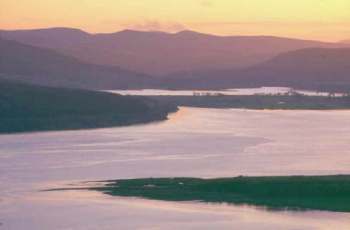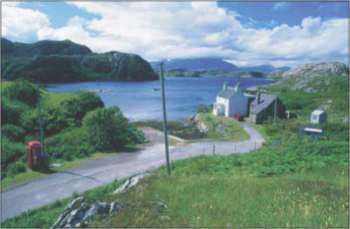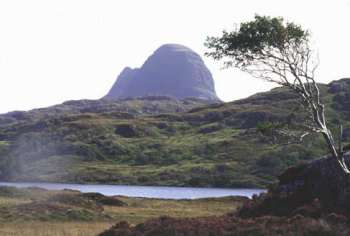 | Caithness.Org | Community | Business | Entertainment | Caithness... | Tourist Info | Site Map |
• Advertising • Chat Room • Contact Us • Kids Links • Links • Messageboard • News - Local & Scottish • News - UK & News Links • About / Contact Us • Submissions |
• Bookshop • Business Index & News • Jobs • Property For Sale • Property For Rent • Shop • Sutherland Business Index |
• Fishing • Fun Stuff • George, The Saga • Horses • Local Galas • Music • Pub Guide • Sport Index • What's On In Caithness |
• General Information • B & Bs • Backpackers • Caravan & Camping • Ferries • Getting Here • Holiday Letting • Hotels • Orkney • Pentland Firth • Sutherland • Taxis |
| N E W S F E E D S >>> |
The Sutherland
Biodiversity Action Plan - October 2003
SUMMARY
|
SUMMARY Biodiversity means the variety of life or the richness of nature. This Local Biodiversity Action Plan attempts to set out what is important and valued about the natural environment of Sutherland, in terms of broad habitats and species, and to identify a number of actions and projects that could be undertaken to help protect or enhance it.
This plan is divided into two sections, each of which is subdivided into six chapters according to the following broad habitat types: sea & coast; river, loch & wetland; croft & farm land; forest & woodland; mountain & moor; and town & village. The first Section is the new material, the ‘Local Biodiversity Action Plan’, and it identifies the major issues, lists current projects and suggests future actions for each of these broad habitat types. Section Two contains a very basic biodiversity
audit, the supporting information that describes priority habitats and
species from both national and local perspectives, again for the six broad
habitat types. The main issues identified in the Sea and Coast
section are grouped under the headings ‘fishing’, ‘aquaculture’,
‘pollution and litter’, ‘coastal management’ and ‘wildlife tourism’.
Suggested projects include the designation and management of Under River, Loch and Wetland, the main issues are ‘pollution’, ‘habitat modifications’, ‘reduction in fish populations’, ‘flood protection’; ‘species introductions’ and ‘land of awareness’. Future actions include a project to raise awareness of pollution issues and encourage local communities to install reed bed systems; the restoration of riparian habitats and spawning beds; unblocking of some water courses to improve spawning habitats for migratory fish; the management of wetland areas to reduce flooding downstream; the production of a Freshwater Atlas recording the location and condition of all national and local priority species; and a project to monitor and remove mink from North West Sutherland.
|
The issues facing croft and farm land include
‘industry problems’ in general, ‘lack of agrienvironment funding’, a
‘decline in cattle numbers’, a ‘loss of boundary features’ and, in some
areas, ‘intensification’.
Opportunities for future action include a project to enhance the links between agriculture and biodiversity through tourism and produce marketing; the provision of business advice tailored to the needs of crofters and farmers; the enhancement and increased entry into the Rural Stewardship Scheme; encouraging more local people to rear cattle through the use of demonstration sites; and the provision of training courses on the management of boundary features. Under the Forest and Woodland section, several issues have been identified under the ‘management of semi-natural woodlands, coniferous plantations, riparian woodlands, and policy and urban fringe woodlands’. Projects that encourage woodland managers to leave more standing deadwood; raise awareness and encourage woodland managers to plant or regenerate riparian woodlands; and encourage community involvement in the management of coniferous plantations are welcomed. ‘Overgrazing and inappropriate burning’, the ‘balance between moorland and woodland land uses’, ‘other management issues’, ‘recreation and path maintenance’ and ‘renewable energy’ have been identified as issues under the Mountain and Moorland section. Suggested projects include a project to tackle the issue of unmanaged muirburning; enhanced support for the production and implementation of Deer Management Plans; the initiation of local access forums to help manage and provide for access to mountain and moorland areas; and a review of the potential sites for the generation of renewable energy to guide development away from sensitive areas.
Finally, under the Town and Village section, ‘lack of resources’ and ‘lack of awareness on biodiversity issues’ have been identified as key issues, in addition to the ‘threat of fungal infections’ and ‘road verge and hedge maintenance’. Suggested projects include encouraging local people to garden for wildlife; more ‘Know Your Own Patch’ initiatives; and the incorporation of biodiversity into future roadside maintenance contracts. The main partners that will be involved in the delivery of the plan, be they Council departments, agencies, organisations, interest groups, local communities or individuals, are listed in Annex 1, and Annexes 2 and 3 provide a list of references and a glossary. |












